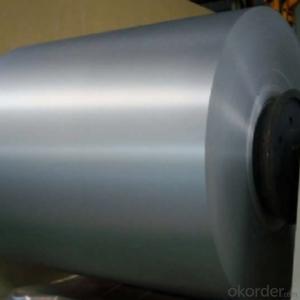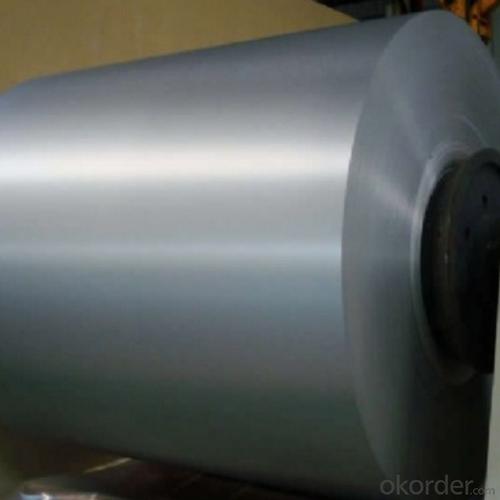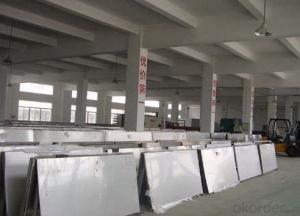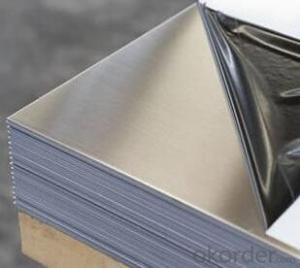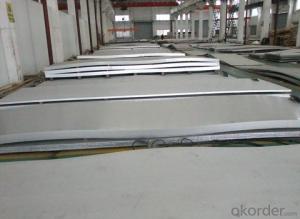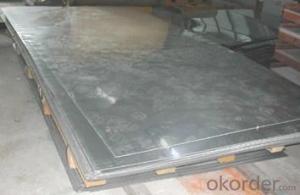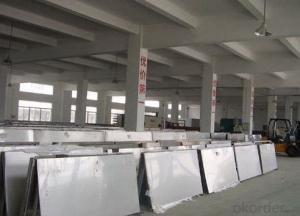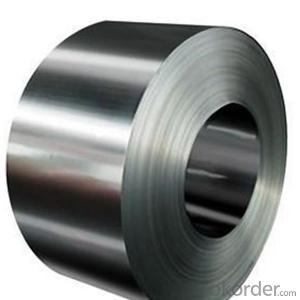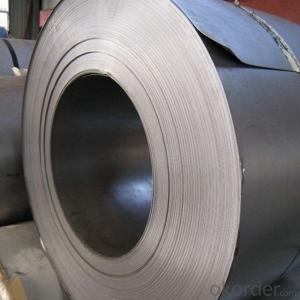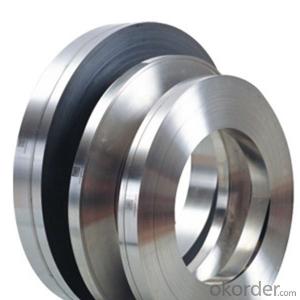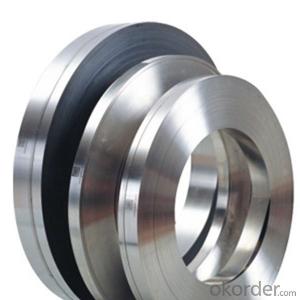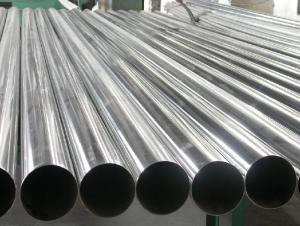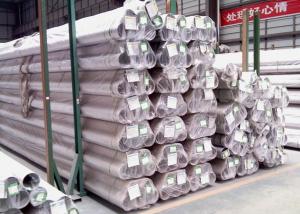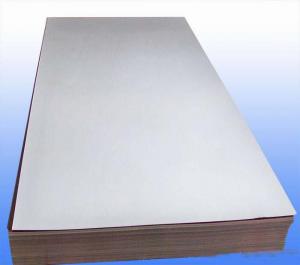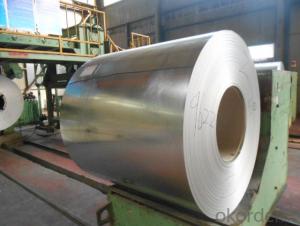Hot Rolled Steel Coils NO.1 Finish 304 Grade
- Loading Port:
- Shekou
- Payment Terms:
- TT OR LC
- Min Order Qty:
- 22 m.t.
- Supply Capability:
- 200000 m.t./month
OKorder Service Pledge
OKorder Financial Service
You Might Also Like
Specification
Products Description for Stainless Steel Coils/Sheets:
Product | stainless steel coils/plates/sheets | ||
Discharge Port | Any Port, China | ||
Size | Coils | Cold Rolled: | Thickness0.3-8mm,Width:280-2100mm |
Hot Rolled : | Thickness3-14mm,Width:650-2100mm | ||
Plates | Thickness2-80mm,Width:1500-3000mm | ||
Coil Weight | About 20 Tons | ||
Grade | 201,202,304/304L/304H,316/316L/316H,321/H,310S,409/L,430 etc. | ||
Technique | Hot Rolled/Cold Rolled | ||
Finish | 2B, BA, 2D, No1, No2, No4,NO.8,SB etc | ||
Edge | Mill Edge / Slitting Edge | ||
Package | In bundles, or as customer's requirement | ||
Place of Origin | Made in China | ||
MOQ | 20 Tons | ||
Packaging & Delivery for Stainless Steel Coils/Sheets:
Packaging Detail Standard export packing or following customer's demand
Delivery Time: Within 30-40 days after deposit or according to the order quantity
Detail picture for Stainless Steel Coils/Sheets
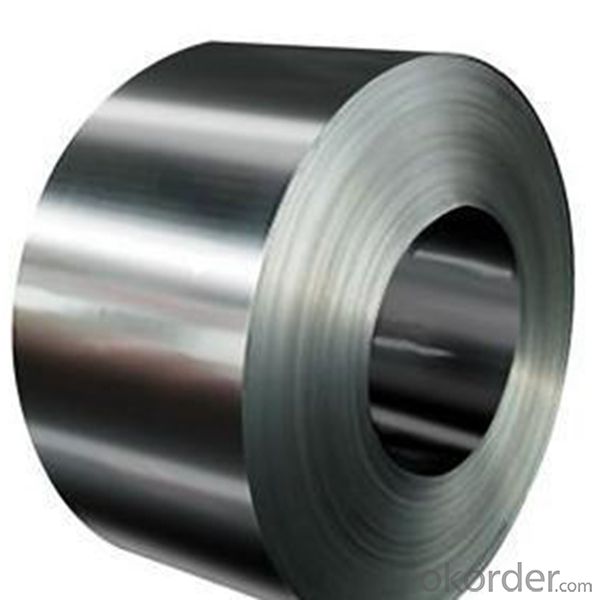
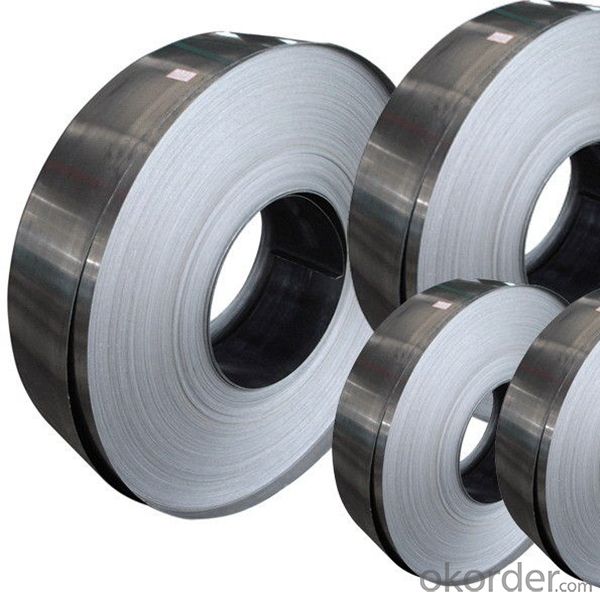
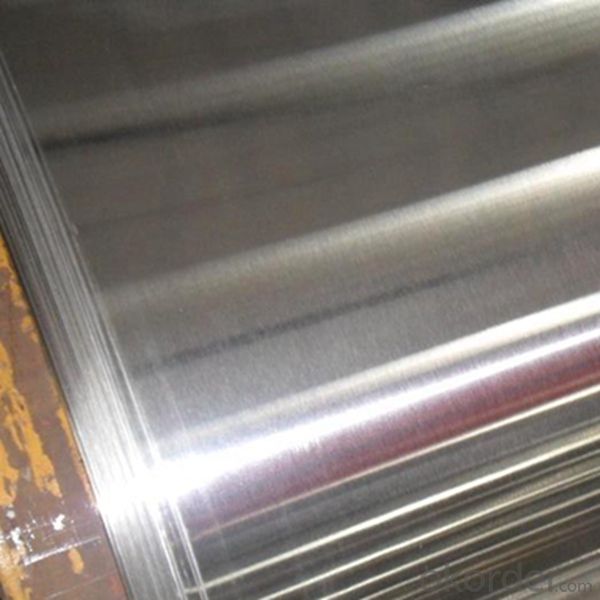
Application of Stainless Steel Coils
(1)Boiler heat exchanger,
(2)Chemical industries,
(3)Hardware fields,
(4)Construction material,
(5)Kitchen utensils,
(6)Building construction,
(7)Medical equipment,
(8)Chemical tank,
(9)Pipe etc
Export Markets for Stainless Steel Coils/Sheets:
Our target market is the international market. Every year we export most of products to countries like India, Pakistan, South Korea, Brazil, Australia, South Africa, Spain, Sri Lanka, Taiwan, Hong Kong, etc.
- Q: Can stainless steel sheets be used outdoors?
- Yes, stainless steel sheets can be used outdoors. Stainless steel is highly resistant to corrosion, making it an excellent choice for outdoor applications. It can withstand exposure to moisture, humidity, and extreme weather conditions without rusting or deteriorating. This makes stainless steel sheets suitable for various outdoor applications such as building facades, roofing, fencing, outdoor furniture, and decorative elements. Additionally, stainless steel is durable, easy to clean, and has a sleek appearance, making it a popular choice for outdoor use in residential, commercial, and industrial settings.
- Q: How do you prevent scratching on stainless steel sheets during handling and installation?
- To prevent scratching on stainless steel sheets during handling and installation, there are several steps you can take: 1. Use protective covering: Apply a protective covering or film on the surface of the stainless steel sheets before handling or installing them. This covering acts as a barrier, preventing scratches and scuff marks during transportation and installation. Ensure that the covering is suitable for stainless steel and does not leave any residue upon removal. 2. Handle with care: Be mindful of how you handle the stainless steel sheets. Avoid dragging or sliding them against rough surfaces or each other, as this can cause scratches. Instead, use proper lifting techniques and handle the sheets with clean, dry hands or gloves to minimize the risk of leaving marks. 3. Use appropriate tools: When working with stainless steel sheets, make sure to use tools that are specifically designed for this purpose. Avoid using tools with rough or abrasive surfaces that could scratch the stainless steel. Opt for tools made from soft materials or with protective coatings to minimize the chances of damaging the surface. 4. Clean work areas: Before installing stainless steel sheets, ensure that the work area is clean and free from any debris or particles that could potentially scratch the surface. Wipe down the area with a clean cloth or soft brush to remove any dirt, dust, or loose materials that could cause scratches during installation. 5. Secure sheets during transportation: If you need to transport stainless steel sheets, ensure that they are properly secured to prevent any movement or shifting that could lead to scratches. Use appropriate packaging materials such as foam inserts, edge protectors, or straps to keep the sheets in place and minimize the risk of damage. By following these preventive measures, you can significantly reduce the risk of scratching stainless steel sheets during handling and installation, ensuring a pristine finish and maintaining the quality of the material.
- Q: How do you bend stainless steel sheets?
- To effectively bend stainless steel sheets, a combination of skill, knowledge, and the right tools is necessary. Follow these steps for successful bending: 1. Identify the specific grade of stainless steel you are working with as each grade possesses unique characteristics affecting malleability and bending response. 2. Prior to bending, ensure the stainless steel sheet is clean and devoid of any dirt or debris. Use a mild detergent and a soft cloth for surface cleaning. 3. Mark the precise bending line by measuring and indicating the desired spot. Utilize a ruler or straight edge for accuracy. 4. Select an appropriate bending tool based on the size and thickness of the stainless steel sheet. Options include a press brake, rolling machine, or bending machine. 5. Gradually apply pressure by placing the stainless steel sheet in the bending tool, aligning it with the marked bending line. Avoid excessive force to prevent cracking or deformation. 6. Adjust the bending angle as needed by repositioning the stainless steel sheet within the bending tool. Utilize the tool's adjustments or supplementary tools like clamps for precise angles. 7. Inspect the result by carefully removing the stainless steel sheet from the bending tool. Check for defects, cracks, or unevenness. Minor adjustments can be made using a rubber mallet or a hammer with a soft face. Keep in mind that bending stainless steel sheets requires practice and precision. Begin with smaller projects and gradually advance to more complex bends. If uncertain or lacking experience, consult a professional in metal fabrication for the best outcomes.
- Q: Can stainless steel sheets be used for hygienic applications?
- Stainless steel sheets are indeed suitable for hygienic applications. The reason lies in its remarkable hygiene properties attributed to the non-porous surface, which effectively resists bacteria, mold, and other microorganisms. Moreover, stainless steel is effortless to clean and maintain, making it perfect for sectors that prioritize cleanliness and hygiene, including the food and beverage industry, healthcare facilities, and pharmaceutical manufacturing. Furthermore, stainless steel exhibits exceptional durability, corrosion resistance, and high-temperature tolerance, rendering it a superb choice for hygienic applications.
- Q: Can stainless steel sheets be used for heat recovery systems?
- Heat recovery systems can utilize stainless steel sheets. Stainless steel is known for its high thermal conductivity and corrosion resistance, making it an ideal material for heat transfer applications. In heat recovery systems, stainless steel sheets are commonly employed as heat exchanger plates or tubes because they efficiently transfer heat from one fluid to another. The corrosion resistance of stainless steel guarantees the durability and reliability of the heat recovery system, even in harsh environments and at elevated temperatures. Furthermore, stainless steel sheets can withstand thermal expansion and contraction, enabling their use in different heat recovery system designs. Overall, stainless steel sheets are a favored option in heat recovery systems due to their exceptional heat transfer properties, long-lasting nature, and resistance to corrosion.
- Q: How do you restore the shine or finish on stainless steel sheets?
- To regain the luster or polish on stainless steel sheets, there are several approaches you can attempt: 1. Warm water and soap cleanse: Initiate the process by washing the stainless steel sheets with warm water and a mild dish soap. Employ a soft cloth or sponge to delicately scrub the surface, then rinse it with clean water and meticulously dry it with a clean cloth. This procedure should eliminate any dirt or grime that is dimming the shine. 2. Vinegar solution: In case the stainless steel sheets possess obstinate stains or lackluster spots, you can experiment with a vinegar solution. Combine equal parts of white vinegar and water in a spray bottle, then spritz the solution onto the surface. Allow it to sit for a few minutes, then wipe it away with a soft cloth. Vinegar aids in stain removal and rejuvenates the shine of stainless steel. 3. Baking soda paste: For more stubborn stains or scratches on the stainless steel sheets, you can concoct a paste using baking soda and water. Blend an ample amount of baking soda with water until a thick paste forms, then apply it to the stained areas. Gently scrub the surface with a soft cloth or sponge, moving in the direction of the grain. Rinse with water and meticulously dry it. 4. Stainless steel cleaner: There are commercially available stainless steel cleaners that are specifically formulated to restore the shine and finish of stainless steel. Adhere to the instructions on the cleaner and administer it to the surface using a soft cloth or sponge. Gently rub in the direction of the grain and rinse with water. To prevent water spots, ensure thorough drying. Always remember to test any cleaning method or solution on a small, inconspicuous area of the stainless steel sheet before applying it to the entire surface. This precaution will help ensure that the method or solution does not cause any damage or discoloration.
- Q: What are the applications of stainless steel sheets?
- Due to their various beneficial properties, stainless steel sheets find a wide range of applications. Some common uses include: 1. Construction: Stainless steel sheets are widely utilized in the construction industry for various purposes. They provide durability, corrosion resistance, and an attractive appearance, making them suitable for cladding, roofing, wall panels, as well as structural components like beams, columns, and reinforcement bars. 2. Kitchenware: The production of kitchen appliances and utensils extensively involves stainless steel sheets. They are used to manufacture sinks, countertops, backsplashes, and cabinets. Stainless steel is preferred in the kitchen due to its hygienic properties, resistance to staining and corrosion, and ease of cleaning. 3. Automotive industry: Stainless steel sheets are utilized in the automotive industry for producing various components. They are used in the manufacturing of exhaust systems, mufflers, fuel tanks, and decorative trims. Stainless steel sheets offer corrosion resistance, heat resistance, and durability in harsh automotive environments. 4. Medical equipment: The medical field widely employs stainless steel sheets for the production of surgical instruments, implants, and medical equipment. The corrosion resistance and biocompatibility of stainless steel make it an ideal material for these applications. 5. Chemical processing: The chemical industry heavily relies on stainless steel sheets due to their corrosion resistance and ability to withstand high temperatures. They are used for manufacturing storage tanks, pipes, valves, and pressure vessels. Stainless steel sheets are preferred in chemical processing applications to prevent contamination and ensure process safety. 6. Energy and power generation: Stainless steel sheets are utilized in power plants, refineries, and other energy generation facilities. They are used in manufacturing boilers, heat exchangers, and condensers due to their high-temperature resistance, corrosion resistance, and strength. 7. Decorative applications: Stainless steel sheets are frequently employed in architectural and decorative applications. They are used for decorative panels, elevator doors, signage, and furniture. The versatility of stainless steel allows for various finishes and textures, making it a popular choice in interior and exterior design. In conclusion, stainless steel sheets are incredibly versatile and find numerous applications in various industries. Their corrosion resistance, durability, strength, and aesthetic appeal make them an ideal material for a wide range of purposes.
- Q: What's the difference between stainless steel 304 2B board and Ba board?
- 304 stainless steel2B board: without glossBA board: an ordinary mirror that shines a littleStainless steel and mirror, that is, 8K board, like a mirror
- Q: Can stainless steel sheets be used for food storage containers?
- Yes, stainless steel sheets can be used for food storage containers. Stainless steel is a popular choice for food storage containers due to its durability, non-reactive nature, and resistance to corrosion. It does not impart any taste or odor to the stored food, making it safe for long-term storage. Stainless steel is also easy to clean and maintain, making it a hygienic option for food storage. Additionally, stainless steel containers are often preferred for their eco-friendly properties, as they are reusable and can help reduce the use of single-use plastic containers. Overall, stainless steel sheets are a suitable and reliable choice for food storage containers.
- Q: Can stainless steel sheets be used in the automotive industry?
- Yes, stainless steel sheets can be used in the automotive industry. Stainless steel is often used in the construction of automotive parts due to its exceptional strength, durability, and resistance to corrosion. It is commonly used in the production of components such as exhaust systems, fuel tanks, bumpers, and trim. Stainless steel sheets offer a high degree of flexibility in terms of design possibilities, allowing manufacturers to create complex shapes and structures. Additionally, stainless steel's aesthetic appeal and ease of maintenance make it a popular choice in the automotive industry.
Send your message to us
Hot Rolled Steel Coils NO.1 Finish 304 Grade
- Loading Port:
- Shekou
- Payment Terms:
- TT OR LC
- Min Order Qty:
- 22 m.t.
- Supply Capability:
- 200000 m.t./month
OKorder Service Pledge
OKorder Financial Service
Similar products
Hot products
Hot Searches
Related keywords
